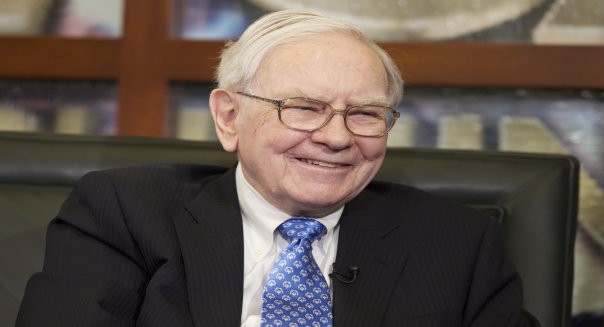A Look At Berkshire Hathaway s Many Components (BRKA USH KO WFC)
Post on: 5 Апрель, 2015 No Comment

Generally speaking, it’s easy to summarize what each of the largest corporations in existence do. “Banking,” “retail,” “car manufacturing,” et al. And then there’s Berkshire Hathaway Inc. (BRK-A ), a company so heterogenous its activities can be hard to describe succinctly. The Omaha-based behemoth is a throwback to the traditional conglomerates of the 20th century. The only difference is that Berkshire Hathaway is far more aggressive, acquisitive and profitable than defunct corporate groups such as Gulf+Western and Ling-Temco-Vought ever dreamed of being.
Berkshire Hathaway has 59 wholly owned (and practically wholly owned) subsidiaries. The qualifier is necessary because they do include a half-dozen or so which Berkshire Hathaway owns all but a small percentage of. And that doesn’t even count the various giant multinationals that Berkshire Hathaway owns large minority shares of, such as Graham Holdings Co. (GHC ), parent company of the Washington Post (23%); USG Corp. (USG ) (19%); Moody’s Investors Service (12%); and Berkshire Hathaway’s famed “Big 4” investments of Coca-Cola Co. (KO ), Wells Fargo & Co. (WFC ), American Express Co. (AXP ) and International Business Machines Corp. (IBM ). (For more, see: How Warren Buffett Made Berkshire Hathaway A World-Beater .)
Wholly Owned, Operating Independently
As for the wholly owned subsidiaries themselves, most of them had operated independently for years if not decades, only for Warren Buffett and Charlie Munger to show up one day with cash in hand and possession on their minds. Berkshire Hathaway started buying up existing companies in the late 1960s, and continues to today. Its most recent purchase was of half the H.J. Heinz Company (which is far more than just a condiment manufacturer) in 2013 for $23 billion.
Berkshire Hathaway doesn’t make detailed financial information on each of its subsidiaries publicly available. However, some of the largest and more recently subsumed ones still submit 10-K declarations with the United States Securities and Exchange Commission. thus giving us an idea of their relative sizes. (For more, see: How Does Warren Buffett Choose The Companies He Buys? )
A Mammoth In BNSF
Year in and year out, Burlington Northern Santa Fe is probably Berkshire Hathaway’s largest subsidiary. As the 2nd-largest freight railway in North America, BNSF is full of superlatives attesting to its magnitude. It ships more coal, grain, beer, wine and automobiles than any other railway in the Western Hemisphere, and proudly states in its company literature the vivid claim that it ships enough fertilizer to cover the entire state of Kansas.
BNSF’s shareholders’ equity totals $48 billion, which dwarfs such standalone railway giants as Canadian National Railway Co. (CNI ) and Union Pacific Corp. (UNP ), even combined. In fact, that figure represents more than one-fifth of Berkshire Hathaway’s total equity. Adjusting for inflation, that shareholders’ equity value attributable to BNSF is comparable to the amount spent by Berkshire Hathaway in 2009 to purchase all of the BNSF shares it didn’t already own. (For more, see: What Will Become Of Berkshire Hathaway Beyond Buffett? )
But Insurance Is Still King
Berkshire Hathaway is so large and so dominant that even though it owns one of the largest and most vital transportation networks in the country, that network isn’t even the company’s largest business. Despite its interest in everything from candy to furniture to shoes, more than anything else Berkshire Hathaway is primarily an insurance provider.

The insurance businesses under the Berkshire Hathaway umbrella number in the dozens and are greatly specialized. They include reinsurance (General Re), commercial auto (National Indemnity), and workers’ compensation (Applied Underwriters), among many others. But Berkshire Hathaway’s largest and best-known insurance subsidiary is GEICO. The second-biggest personal auto insurer in the United States, the former Government Employees Insurance Company collects about $18 billion in premiums annually. That’s a distant second to State Farm, but more than enough to profit and remunerate Berkshire Hathaway shareholders by a tangible amount. And while it isn’t a perfect analog to shareholders’ equity, GEICO’s policyholders’ equity (admitted assets less the company’s total liabilities) amounts to over $12 billion. (For more, see: Is It Time To Break Up Berkshire Hathaway? )
Making Money Over Making Headlines
Management at Berkshire Hathaway is of the belief that making money is more important than gaining profile or buzz. Yet another of the unsexy businesses that the company profits from is trucking. Specifically, food trucking. McLane Co. delivers produce and other groceries (or in the company’s unwieldy corporatespeak, “supply chain logistic solutions”), to the tune of five million tons a year. If it’s on the shelf at a chain supermarket or served at a chain restaurant, there’s a good chance it came off a McLane truck. McLane did $45 billion worth of business last year, in an industry that’s forever recession-resistant if not fully recession-proof. (For more, see: 3 Not-So-Obvious Reasons To Won Berkshire Hathaway .)
The Bottom Line
It defies both description and precedent, Berkshire Hathaway’s sustained record in so many sectors and for so many decades. What’s even more remarkable is that the company’s method is no great secret – buy undervalued assets and hold onto them. In theory, few things are simpler. In practice, corporate executives have limited patience and a finite capacity to listen to the wails of shareholders who are only in it for the short term. By operating with a purpose, examining each acquisition on its own merits, and of course buying back the company’s own stock whenever prudent, Berkshire Hathaway has made money at a level unlike anything seen before. Its Class A shareholders, who will gladly go without a dividend if it means getting a $200,000+ share price, seem to appreciate it. [For more, see: Always Bet On Berkshire Hathaway (And Here’s Why) .]














